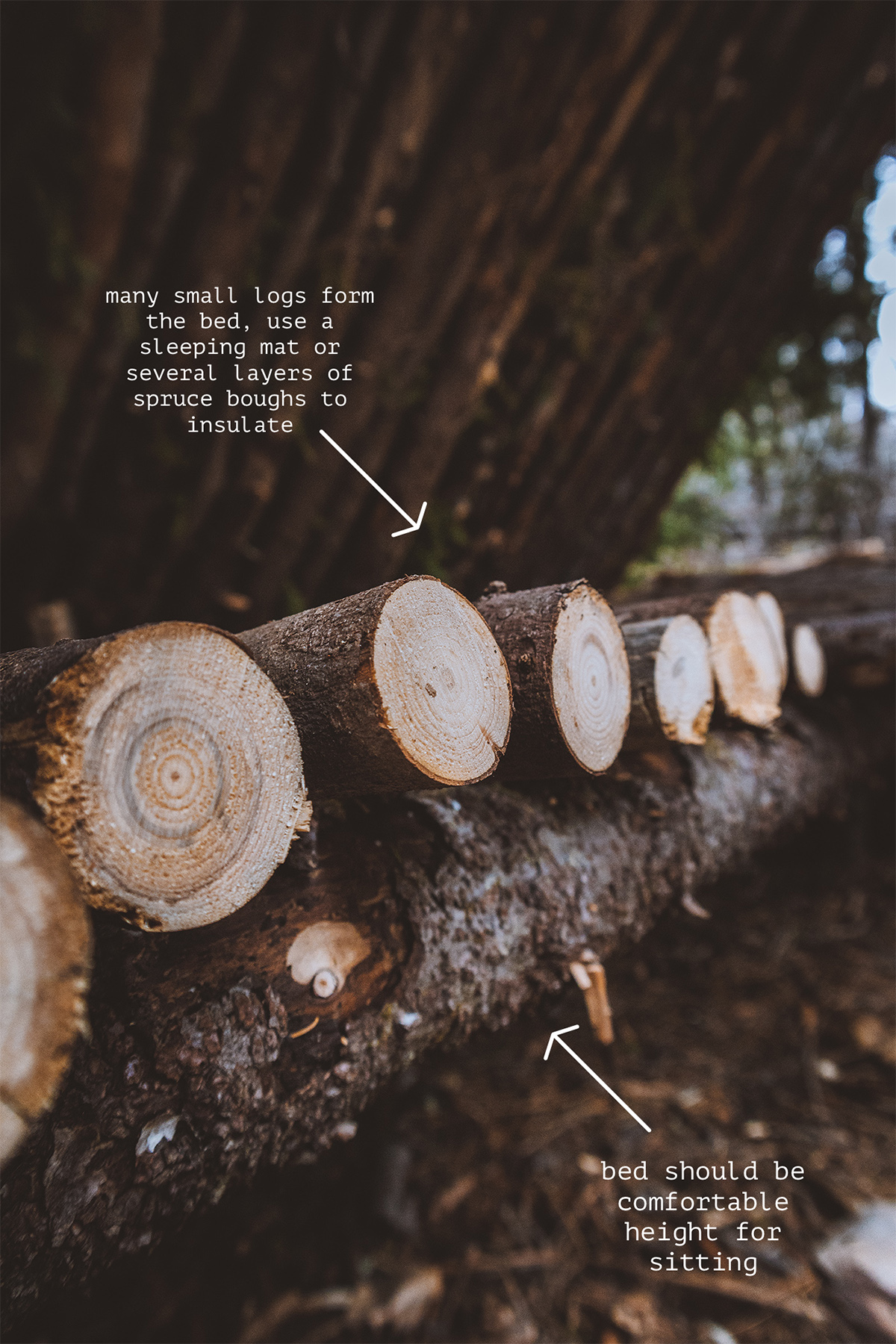I’ve been wanting to build a lean-to shelter for years. When the opportunity finally came around, I was excited to try it out. Here’s how I did it, what materials I used, and what I’d do differently. If I can do this, so can you!

Land + Materials + Tools
The hardest part of this project is finding land to build the shelter. If you have your own forested property, you’re halfway done. Otherwise, you need to find a piece of crown land or a property owner that will allow you access. Crown land regulations vary by province. If you want to cut down trees and make a shelter, you will likely have to apply for a permit.
Some forests are better suited to this kind of shelter making than others. The Acadian and boreal forests work well because you can find lots of straight timber and evergreens. Whereas, the temperate rainforest of British Columbia, with it’s dense and twisted trees, would be much harder.
Once you have found a suitable area, the materials and tools are simple enough. You’ll need work gloves, a saw, hatchet, knife, paracord and, of course, some trees.
How I Built My Lean-To Shelter
I’m no expert in shelter building, but I learned a lot from this process. My best advice is to get out there and see what works. That said, here’s how I did it:
Building the Raised Bed: I used 6 logs to form the base of the bed. Three logs for each side arranged in a triangle pattern (2 on the bottom, 1 on the top). I secured these in place with wooden pegs. Next, I laid two logs horizontally on top of the base. To finish the bed, I laid several smaller logs along the frame.


Building the Shelter Frame: To create the shelter frame, I lashed a ridgepole across two supporting trees. I rested the ridgepole on top of two logs which were also lashed to the supporting trees. For further reinforcement, I wedged a supporting beam in the middle of the ridgepole.
Building the Roof: The shelter roof is made by angling several logs from the ridgepole to the ground. The steeper the angle, the easier the shelter will shed water. To make a water resistant roof, I collected spruce boughs and layered them beginning at the top and working my way down. You need a lot of spruce boughs to create a water resistant roof.
What I’d Do Differently
In hindsight, I would do the lashing and knots differently. This video teaches square lashing, which would be perfect for this project.
I’d also put the ridgepole on the other side of the supporting trees. That way, the weight of the roof wouldn’t threaten to push the ridgepole away from the trees.
In a survival situation, Mors Kochanski teaches that the ridgepole should be shoulder height to maximize warmth and still have room to sit upright.
Limitations of Lean-To Shelters
Lean-to shelters do not provide any insulation from the cold and only partial protection from the elements.
To keep warm, you can build a wall backed fire that helps reflect and radiate heat. In their books, Mors Kochanski and Ray Mears both suggest placing your lean-to shelter one full stride away from the fire. That said, in windy and dry conditions you might want to move it further.
If building a sub-arctic lean-to interests you, check out Caleb Musgrave’s build.
Caring for Our Forests
Except for the spruce boughs, this shelter was made entirely from fallen trees and standing deadwood. Even these dead trees have an important role to play in the ecosystem. I encourage you to be mindful and take only what you need for your shelter to reduce the environmental impact.
When you’re looking for boughs, take from multiple trees to avoid causing undue stress and damage. Be mindful with your cuts so you don’t strip bark.
Happy Building!
If you’ve ever considered doing a project like this, I hope this post encouraged you to finally give it a try.
Sources
Mors Kochanski. 2014. Bushcraft: Outdoor Skills and Wilderness Survival. Partners Publishing.
Ray Mears. 2002. Ray Mears Essential Bushcraft. Hodder and Stoughton.











































